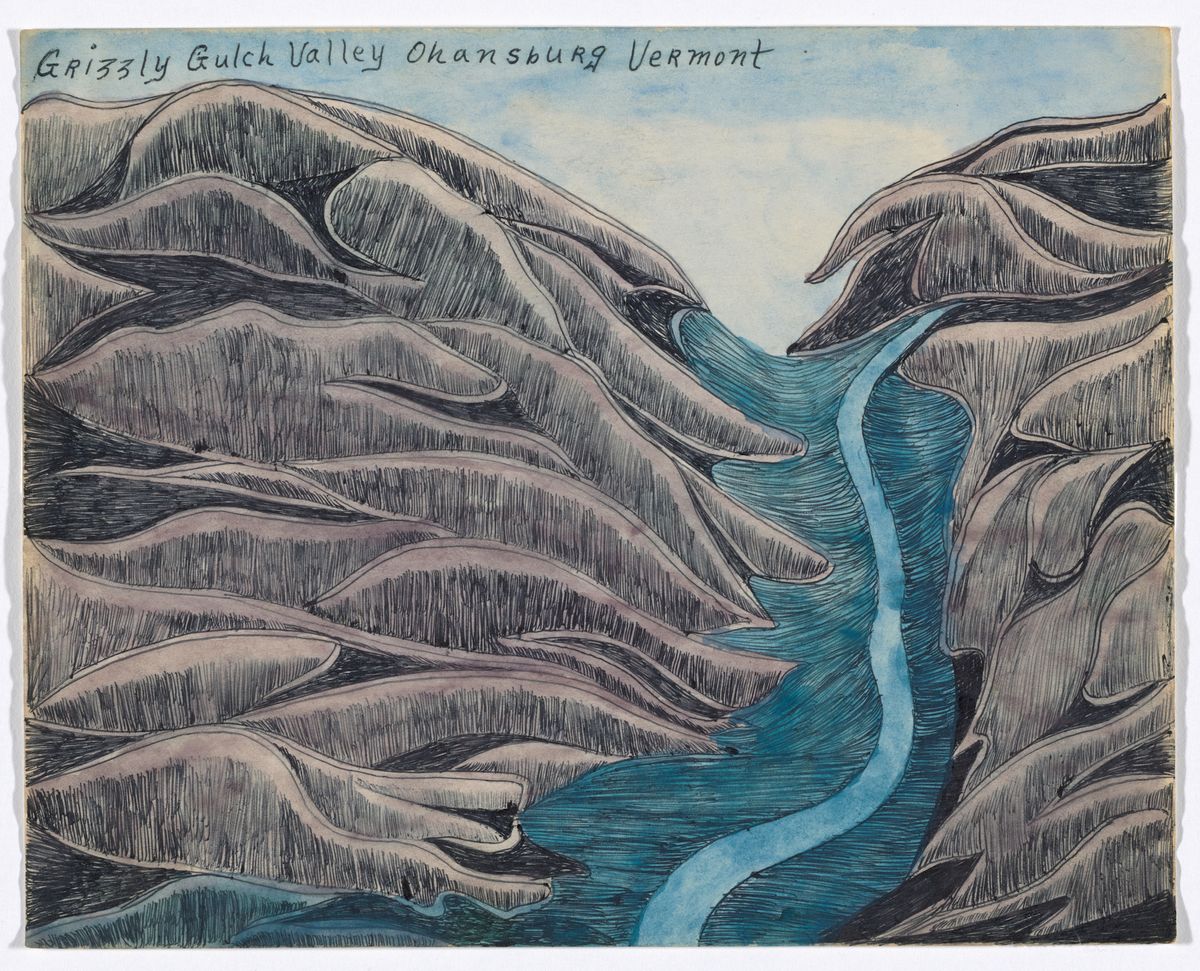Joseph E. Yoakum: What I Saw
Until 19 March 2022 at the Museum of Modern Art, 11 West 53 Street, Manhattan
The exhibition gathers more than 100 works from the prolific American artist. According to Yoakum (1890-1972), he lived an almost mythic life. Born to a formerly enslaved mother and a father with possible Native American roots, he ran away from home as a teenager, served in the army, travelled the world as a circus handyman, worked as a railroad porter and operated an ice cream stand in Chicago. Many of his claims cannot be verified but it is clear that a wild imagination powered his talents. Though not formally trained or educated, his drawings show a confident hand and evidence of a life well-travelled. Many of his works are landscapes, real and imagined, drawn with flattened perspective and the same few marks: squiggly lines, tear-shaped drops, occasional triangles. Mountains are rendered as swirling masses and trees are simple conical shapes. He used common materials like ballpoint pens, colored pencils and manila paper to great effect to create fantastic worlds that are at once familiar and other-worldly. Yoakum did not start drawing until he was in his early 70s, which makes the assurance of his works all the more remarkable.

Ruth Asawa, Untitled (MI.066, Chair with Double Looped Back), (around 1950-59). © 2021 Ruth Asawa Lanier, Inc. / Artists Rights Society (ARS), New York. Courtesy David Zwirner
Ruth Asawa: All Is Possible
Until 18 December at David Zwirner, 537 West 20th Street, Manhattan
Ruth Asawa’s work has enjoyed a celebrated afterlife, with her now iconic wire mesh sculptures gracing US postal stamps. This exhibition at David Zwirner shines new light on Asawa (1926-2013) with intimate drawings of her family and garden, lesser-known sculptural pieces and graphic works on paper done during her time at the Black Mountain College in North Carolina, as well as a selection of her celebrated hanging wire sculptures. While the show aims to showcase her other talents, these rarely seen works have direct relation to her sculptures and reassert her belief that all forms start with the line. In several drawings of her children sleeping on checked blankets, she loops and interweaves lines to create patterns; her children’s faces seem to be drawn in one continuous stroke. In Untitled (Chair with Double Looped Back) (around 1950-59), one can imagine the pattern making a weaving of sorts; two dimensions become almost sculptural in the way the lines move and vibrate. These works are created with a precision that paradoxically give them a vibrancy and a life beyond the paper.

Sara Penn, Jacket (around 1980s). Courtesy SculptureCenter. Published in
Svetlana Kitto, Sara Penn's Knobkerry: An Oral History Sourcebook (2021).
Niloufar Emamifar, SoiL Thornton, and an Oral History of Knobkerry
Until 13 December at the SculptureCenter, 44-19 Purves Street, Long Island City
It’s the last weekend to see this exploration of the fascinating legacy of Knobkerry, an eclectic store of art, ethnographic artefacts and other objects founded in New York in 1965 by the Black artist and designer Sara Penn. The store-slash-museum was a fixture of the downtown scene before it closed in the 1990s, once counting Janis Joplin, Louise Bourgeois and Jean Michel-Basquiat as regular customers. New sculptures by the artists Niloufar Emamifar SoiL Thornton fill the halls of the cavernous museum, resurrecting Penn’s revolutionary vision and offering viewers a snapshot of a long-lost era of thriving organic creativity in New York’s East Village. The exhibition, which is the brainchild of the curator Kyle Dancewicz, the interim director of the museum, honours Penn’s talent for tapping into and thinking beyond the cultural zeitgeist while also highlighting the dynamic work of two artists who provide a contemporary perspective on art, consumerism and a creative identity that does not subscribe to Eurocentric ideas.


